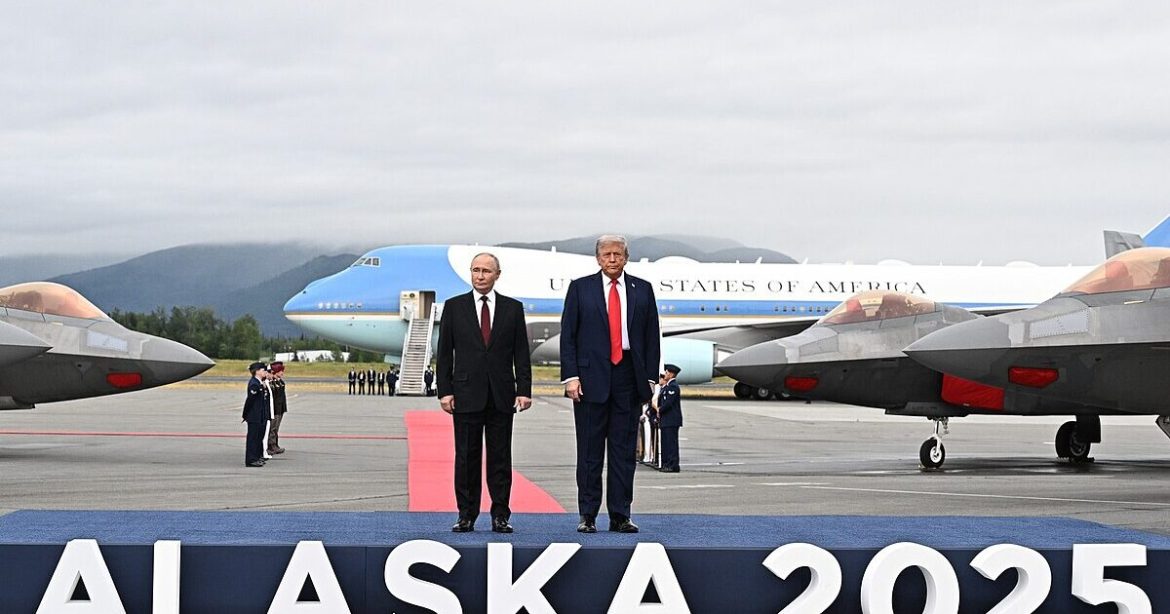

The Trump-Putin Ukraine peace summit, held August 15, 2025, at Joint Base Elmendorf–Richardson in Anchorage, was hailed as a major breakthrough by Ukrainian President Volodymyr Zelensky, NATO Secretary General Jens Stoltenberg, and other European and world leaders. Yet mainstream media insisted the summit produced no results, even reviving false claims that Trump is a Kremlin stooge.
This narrative ignores Trump’s record. In his first term, he imposed and maintained more sanctions on Russia than any previous president. In his second, he maintained Biden-era restrictions while adopting even tougher measures. In July 2025, Trump announced advanced U.S. weapons deliveries to Ukraine, including Patriot missile systems, after expressing frustration that Putin continued missile strikes despite ongoing talks.
Trump has also issued unprecedented sanctions threats. He warned of 100% tariffs on Russia and secondary sanctions against countries buying its oil if no peace deal was reached within 50 days, later shortening the deadline to just “10 or 12 days.” He further promised “large-scale banking sanctions, sanctions, and tariffs on Russia until a cease-fire and final settlement agreement on peace is reached.”
Acting on this policy, he signed an executive order imposing 25% tariffs on India for importing Russian oil and threatened similar action against China and other buyers of Russian exports.
Trump’s rhetoric about Putin has hardened as well. Once describing him as a “tough guy,” Trump recently added, “Putin has fooled other presidents, but he didn’t fool me.” A senior White House official noted that Trump’s “rage has been intensifying” as Russia escalates strikes on Ukraine.
The Trump-Putin summit in Anchorage ended without an agreement being announced, though Trump said the two leaders “made some headway” during several hours of talks. He added there “was no deal until there’s a deal” and that a few sticking points remained, though he gave no details about what they were.
The American mainstream media coverage focused almost entirely on the lack of an immediate ceasefire agreement, portraying the meeting as a failure. Reports emphasized that no deal was signed and suggested European leaders flocked to Washington to support Zelensky in the wake of Trump’s supposed failings.
Some outlets even dredged up the February incident when Trump berated Zelensky at the White House for not wearing a suit, for demanding more money, and for failing to show gratitude. Others went so far as to claim that European leaders were there to counter any advantages Putin gained from the summit. None of this, however, is supported by the facts.
The Anchorage summit did make progress, and the subsequent European delegation to Washington underscored this. Far from opposing Trump, European leaders went to coordinate strategy, gather information, and ensure Europe’s voice was included in ongoing talks.
German Chancellor Friedrich Merz’s office said the trip would “serve as an exchange of information” with Trump, while other officials noted that discussions would cover security guarantees, territorial issues, and continued support for Ukraine. The urgency of the visit reflected the fact that Zelensky had not been included in the Alaska meeting, and Europe wanted to remain directly involved in shaping the outcome.
European leaders also issued striking praise for Trump’s role. In a joint statement, they “welcomed President Trump’s efforts to stop the killing in Ukraine, end Russia’s war of aggression, and achieve just and lasting peace.” Individually, their endorsements were even more direct: NATO Secretary General Mark Rutte called Trump “dear Donald” and “amazing,” saying, “If we play this well, we could end it.” Merz admitted his expectations had been exceeded, declaring, “The path is open now… you opened it last Friday.”
British Prime Minister Keir Starmer noted “real progress” and “a real sense of unity,” while French President Emmanuel Macron thanked Trump for “organizing this meeting and for your commitment.” Finnish President Alexander Stubb went further, saying, “In the past two weeks, we’ve probably had more progress in ending this war than we have in the past three and a half years.”
Even U.S. Special Envoy Witkoff reported that Russia had shown “encouraging signs,” including openness to Article 5–style security guarantees for Ukraine, which he called one of Kyiv’s core demands.
The tone of Monday’s meetings with Zelensky in Washington also stood in stark contrast to February. This time, the Ukrainian president opened with 11 expressions of gratitude in just over four minutes, thanking Trump repeatedly for his personal role in advancing peace.
He called the summit “a truly significant step” toward ending the war, later writing on X that “the end of the war must be fair, and I am grateful to everyone who stands with Ukraine and our people today for the sake of peace in Ukraine, which is defending the vital security interests of our European nations.”
The relief was palpable in both Ukraine and Europe. While the media framed the summit as a failure, the responses from European leaders, Zelensky, and U.S. officials revealed a very different picture: cautious optimism, unity, and a shared sense that real progress had finally been made.
During his second term, Trump has already been credited with ending six conflicts, for which he has been nominated for a Nobel Prize. Bringing the Russia-Ukraine war to a close would be the ultimate achievement, a crowning feather in his cap, and would make mainstream media criticism of his foreign policy and negotiating skills all the more absurd.
The post The Trump-Putin Alaska Summit: Hailed as Success by World Leaders, Despite Mainstream Media Narrative appeared first on The Gateway Pundit.

